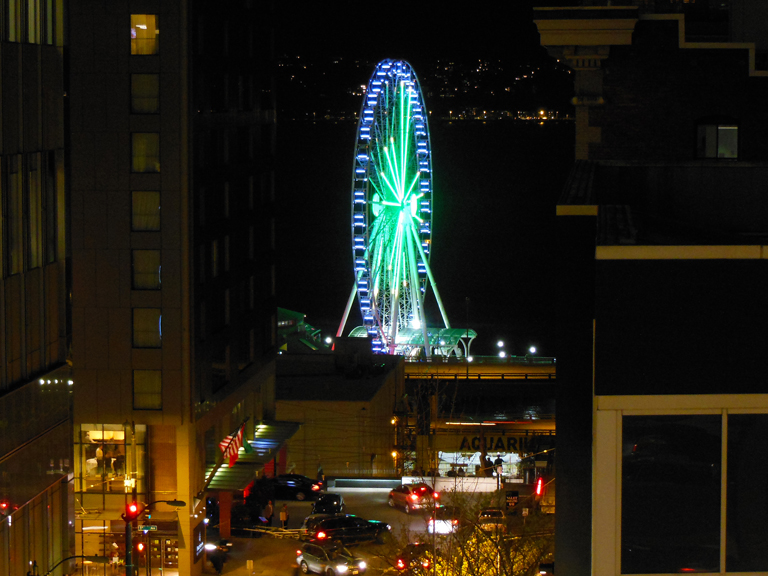We went to the symphony Saturday. The music was wonderful. The Seattle Symphony, with Thomas Dausgaard guest conducting, is going through all of symphonies written by Jean Sibelius in honor of the 150th anniversary of Sibelius’ birth. They opened the evening with Finlandia and then went through Symphonies numbers 1 and 2. The others (3 – 7) will come later in the month with some of the other works Sibelius composed. To me, Finlandia and the first and last movement of the second symphony are my favorites. I got to hear them all in one evening. The symphony played them very well.

We usually park in the garage across the street from Benaroya Hall. As you drive down the upper ramps of the garage you can see the engraved words above on the side of the hall. The quote always reminds me why I love music. The trouble is that you cannot see the full quote without stopping.

We stopped the car for the pictures. I love the lighting with the bare tree branches playing against the large tiles on the building. To the west was the Great Wheel of Seattle all decked out in blue and green. Great evening for a trip to town.

Oh yeah, Sibelius is still a much revered figure in Suomi (Finland to the English speaking people). He passed away in 1957. Not really all that long ago. Like so many famous composers, much of his personal effects and his home are considered national treasures. It wouldn’t surprise me if you could go to his hometown and even see his last movement on display.